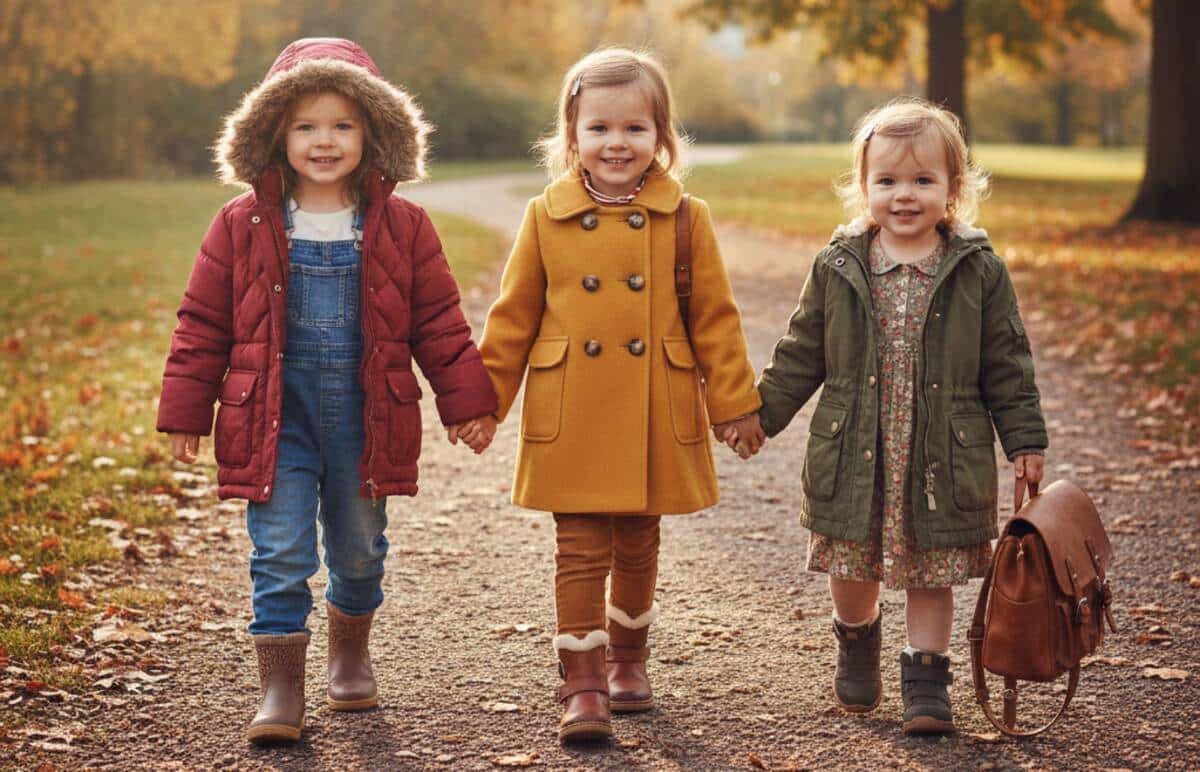It’s that sticky, gold-light time of year when playground mornings surprise you with a chill. You pull a jacket over a sticky hairdo and hope it survives the week. For toddlers, a fall jacket isn’t just a pretty layer; it’s a workhorse. It gets stuffed under car seats, dragged through puddles, smeared with peanut butter, and somehow is expected to look decent by Friday. So: what should you actually buy this autumn? Style that survives real life, fabrics that age gracefully, and features that make mornings less chaotic.
The new palette: color without the cliché
Pink still exists. But the palette widening this season is refreshing. Think warm pumpkin, mossy olive, deep navy, mustard, and that cozy beige you always reach for. These colors hide crumbs better and feel more wearable across outfits. They age well, too—darker neutrals look deliberate, not stained. And prints? Tiny florals are quieter now; abstract swirls and small-scale checks are having a moment. Kids don’t care about trends the way we do, but these choices let parents mix and match without everything looking like a costume.
Durability first: what to ask before you buy
You’ll want to test for a few things. Can the jacket be machine washed repeatedly without the fill clumping? Are the seams double-stitched where the shoulders meet the sleeves? Does the fabric have some abrasion resistance? Brands that prioritize canvas, waxed cotton, or ripstop polyester tend to last longer than fragile synthetics. Also, look for reinforced elbows—yes, reinforced elbows on a toddler jacket; it matters when they learn to lean on pavement. Little details, big payoff: check zipper quality and whether toggles are sewn on or glued. A glued toggle comes off after a couple of sandpit sessions. Zippers with a protective storm flap cut down on wind and keep tiny chins scratch-free.
Insulation that makes sense
You don’t always need full winter-bulk. For fall, aim for modular warmth. Light quilted jackets and thin puffers that layer under a heavier coat are smart. Fleece-lined hoods and taped seams in key places give warmth where it counts—neck, chest, and back—without the pancake effect under a car seat. Merino blends and microfleece make excellent mid-layers. They hold their shape and don’t smell as fast as cheaper synthetic knits. That said, avoid over-engineering: toddlers overheat fast when running, and trying to be too clever with layers can backfire by nap time.
Weatherproofing for playground life
Water resistance, not necessarily full waterproofing, is the practical hero for fall. A jacket with a durable water-repellent finish keeps light drizzle off and dries quickly. Fully waterproof shells with sealed seams are great for heavy rain, but they can feel sweaty during active play. So what’s the compromise? A breathable waterproof membrane in the hood and shoulders combined with a DWR-treated outer is a sensible balance. Reflective trims are a small, underrated feature. They don’t ruin the look and they make school-run evenings safer. Even a discreet reflective zipper pull can help.
Functional details parents actually use
- Hoods that stay put: look for shaped hoods with a modest brim or an adjustable toggle that won’t fall into little faces.
- Pockets with flaps: open pockets fill with leaves and snacks. Flaps or shallow zips keep the good stuff in.
- Easy closures: snaps over zippers are great for toddlers who like to practice dressing, but zippers with a single pull are faster at 7:30 a.m.
- Adjustable cuffs: tiny wrists grow fast. Velcro cuffs prolong the life of a jacket and block drafts.
- Name tags or inner labels: because inevitably a jacket will be left on a bench. Labels that survive wash cycles are a tiny, underrated blessing.
Sustainability: not just a buzzword
If you can, pick jackets made from recycled fibers or brands that offer repair programs. Recycled polyester and responsibly sourced down are increasingly common, and they often perform well. Buying less frequently but better—repairing buttons, replacing toggles, patching elbows—keeps clothing out of landfills and saves money long term. Maybe it feels like extra work now. But it pays off when you don’t have to replace a favored jacket mid-season.
Quick checklist before you click buy
- Machine-washable and retains shape after laundering?
- Reinforced seams in stress areas?
- Adjustable cuffs and secure closures?
- Water-resistant outer with breathable lining?
- Practical color and easy-to-clean fabric?
- Repairability or brand support for fixes? If most boxes are checked, you’ll be grateful later.
Fall jackets for toddlers are small acts of daily care. They keep knees from getting shockingly cold and cheeks from going red and chapped. They help evenings last longer and mornings be slightly less frantic. They’re also a chance to teach children about value—how to care for things that are meant to last. What did you do this season? Did you find a jacket that survived the sandbox test? Tell us about the jacket that outlived everything else—or the one that didn’t—and why. Leave a comment below, share a photo if you like, and follow us on Facebook and Instagram to keep the conversation going.
Before you leave, learn how to pick the perfect baby boy jacket without overthinking it.



